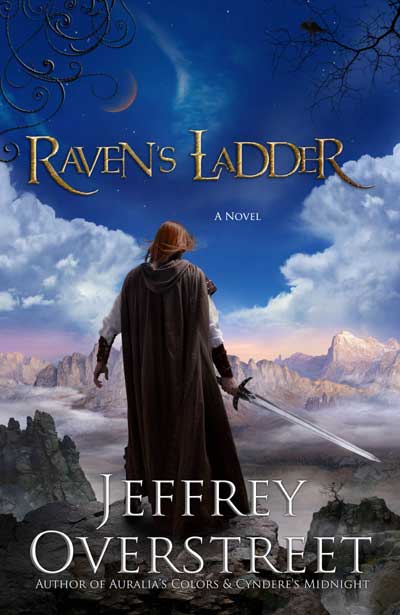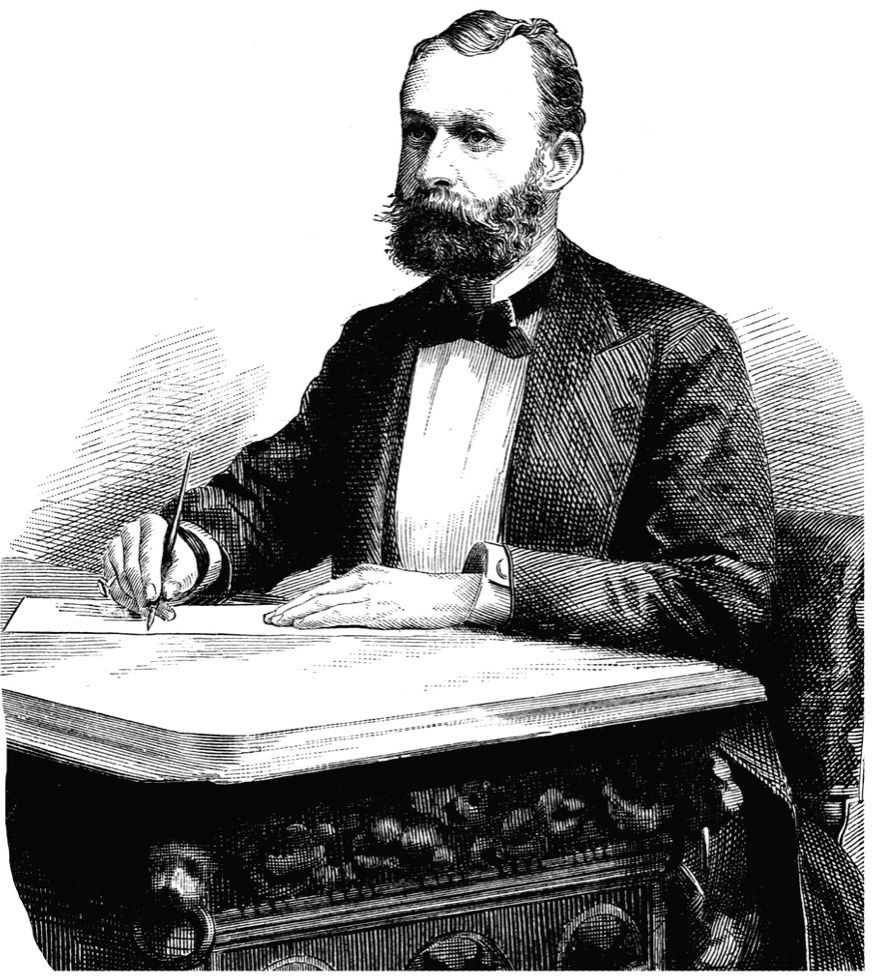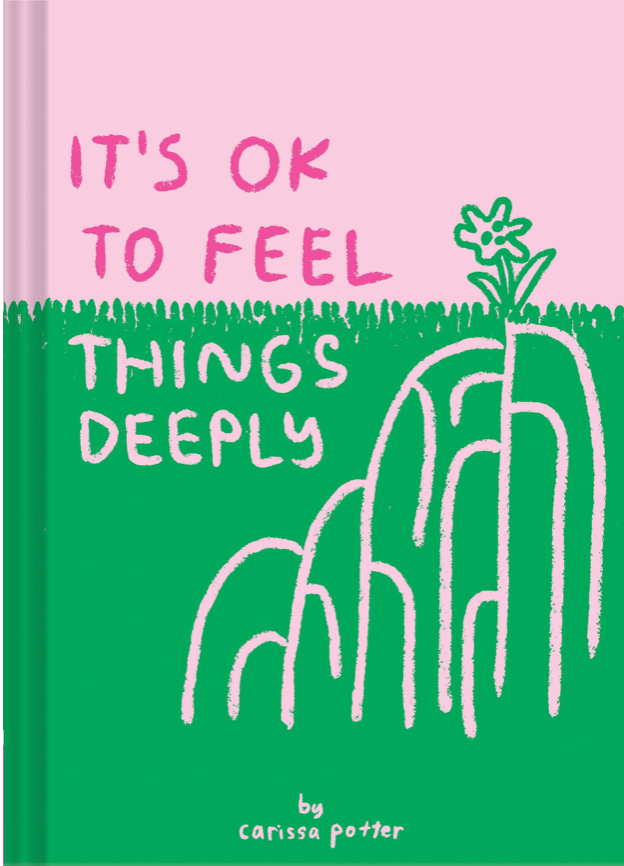Last June, I had the pleasure of attending the Trinity Arts Conference in Dallas, TX, which was inspiring on every artistic level. One night, I settled into a chair in an auditorium to hear author and film critic, Jeffrey Overstreet, give a talk called “A Little Willingness to See,” the title taken from a quote by Marilynne Robinson in her book, Gilead:
Wherever you turn your eyes the world can shine like transfiguration. You don’t have to bring a thing to it except a little willingness to see. Only, who could have the courage to see it?
Every speaker at the conference was amazing, but Jeffrey’s presentation was out of this world – by far my favorite. He gave a brief tour of his personal history with film based on his book Through a Screen Darkly (on my to-read list). His talk was funny, insightful, moving, and very wise. He incorporated Star Wars, Lord of the Rings, Eternal Sunshine of the Spotless Mind, Ephesians 5:11, Acts 17, and the beauty of trees and sky (among many other things). I madly scribbled down insufficient notes and wished he could extend his talk deep into the night.
Afterward, I stepped out into the lobby and wistfully meandered around Eighth Day Books’s tables, one of which held stacks of Jeffrey’s books – including Auralia’s Colors and Cyndere’s Midnight, two fantasy books in The Auralia Thread series. I picked up each book and read the descriptions on the back covers; they seemed magical to the touch. I couldn’t afford either one that night, but I added them to my to-read list as well.
I am happy to report I finally read Auralia’s Colors and Cyndere’s Midnight between December 2009 and January of this year, and I wholeheartedly gave each 5/5 stars on Goodreads. I read one after the other as quickly as I could, breathless.
Jeffrey’s writing is beautiful, sparse, poetic prose, but an unfamiliar style. I can honestly say that I had never read anything like it. I had to read slowly and meditate on the otherworldly details of House Abascar and the Expanse. Northchildren and the Keeper. King Cal-marcus and the ale boy. Maugam and the beastmen. Firewalkers, stonemasters, and wildspeakers. I’d never read a character like Auralia, a mysterious crafter of colors. She not only perplexed me, but also her fellow characters in the book. Then there’s two of my favorite characters, King Cal-raven and Jordam the beastman. I was spirited away into this mysterious, dark, and beautiful world.
As you can imagine, I was entirely geeked up to read the 3rd “gold strand” in The Auralia Thread series: Raven’s Ladder (releases on February 16). It was better than the first two books, if that’s even possible. So I was thrilled when Jeffrey agreed to answer some of my questions about these books, writing, so on, and so forth . . .
JS: I’ve heard some authors talk about how their characters were birthed. For instance, if I remember correctly, Marilynne Robinson once said she was sitting in a hotel room and sensed an old man writing a letter to his son, just as real as he could be, which came to be Gilead.
Did Auralia come to life in a similar way? Or did you see the Expanse first? And does one of your characters birth another, and another, and so on?
JO: Well, if I’m ever inspired the way Marilynne Robinson is inspired, that’ll be a glorious day. She has a magnificent gift. I love Gilead.
Auralia did appear out of the clear blue, yes.
I was hiking near Flathead Lake in Montana with my wife, Anne. We were talking about the imagination. I suddenly had a “What if?” moment. What if an entire society folded up their colorful and creative work and put it away? I saw a colorless city set in the middle of this beautiful forest.
And then I saw a person – a young boy or a young girl – looking out over the city from a high place. Eventually, I decided it was a young girl, and she was weeping. The more I thought about who she might be, the more I became convinced that she was an artist. She would try to help that colorless city by bringing them a gift of art.
The rest of the characters in Auralia’s Colors flowered out of that idea. I found characters who were curious about Auralia’s colors, and characters who were inspired by them. I found characters who were threatened by them, and characters who wanted to exploit them. Then, in Cyndere’s Midnight, I became curious about the monsters that were lurking around the edges of the first story, and wanted to know how they would react if they encountered Auralia’s colors.
I like learning about new worlds by looking through the eyes of different characters. How does the Cragavar forest feel to a Gatherer? To a child? To a soldier? By the time readers get to Raven’s Ladder, they’ve seen the Expanse from a lot of different perspectives.
Several times in this series, your books reminded me of Tolkien’s Lord of the Rings – an epic-scale story occurring in more than one location in the Expanse; otherworldly characters interconnected in surprising ways; divided kingdoms; and so on. Is Tolkien a big influence on your writing?
Who are your other influences?
Tolkien’s a big influence, I’m sure. I read The Lord of the Rings over and over between the ages of 9 and 29. But Tolkien’s nonfiction inspired me, too. He made me very curious about how the imagination works, and how mythology helps us begin to understand parts of the truth that the rational mind cannot comprehend or express.
Tolkien’s perspectives—and those of C.S. Lewis, George MacDonald, G.K. Chesterton, and Madeleine L’Engle—all made me want to explore and discover a story of my own. I eventually grew tired of stories about dragons and elves and dwarves and bloody battlefields. We have too many of those. I wanted to find a story that didn’t remind me of anything else.
I can guess at who might have influenced my style. I still love Richard Adams’s beautiful novel Watership Down. I’ve been reading a steady diet of books written by Patricia McKillip and Guy Gavriel Kay. I’ve spent a lot of time with Mervyn Peake. I read Cormac McCarthy’s The Road while writing Cyndere’s Midnight, and that affected my dreams about the world of the beastmen. And I listened to an unabridged audiobook of Moby-Dick all the way through during the early drafts of Raven’s Ladder. I have no idea what that did to me, but I loved it.

What is the appeal of fantasy books?
That’s hard to narrow down. It depends on the reader and it depends on the fantasy.
I’ve written an essay called “The Eagles Are Coming,” which is published in Response, a magazine produced by Seattle Pacific University. In that article, I tried to sum up why fantasy appeals to me.
In short, I think there are powers and mysteries at work in the world that can only be expressed through fairy tales. Fairy tales allow us to cast nets into mystery and catch things that are otherwise inexpressible. Tolkien said that fairy tales can give us a glimpse of our eventual redemption in a way no other story can.
At its best, fantasy provides us with an escape from the narrow, restrictive perspectives of modernism. And with its emphasis on the primal, it returns us to engagement with the elements, with the stuff of rocks and trees and fire and rivers and mountains. Since those elements of creation “pour forth speech,” according to the Psalmist, we’re able to hear some things more clearly when we meditate there.
But fantasy can be destructive, too. I’ve seen people who are dissatisfied with their lives attracted to the violence, to sorcery, to the ideas of tremendous power that are celebrated in some fantasy stories. I’ve watched people become severely irresponsible, abandoning engagement with their own world in order to indulge in fantasy role-playing games or non-stop fantasy media. Fantasy is dangerous territory and it demands discernment.
There is a lot of beauty in your books, but also a lot of evil and darkness. I remember finishing one of the chapters describing Maugam (Auralia’s Colors) right before bed, wishing I had read further for my dreams’ sake. Do you think good fiction must include this darkness in order to be great art?
Oh, I don’t think good fiction needs to have monsters like Maugam. I included Maugam because the story led me to him. I encountered this frightening dungeon master, and I needed to understand where he came from, and what experiences had made him. He was a creature who grew in a world without light, without color, without love or art.
Sometimes, though, we need to see visions of distortion in order to understand what is good. We can learn about the light by studying what happens when living things are deprived of light.
In Cyndere’s Midnight and Raven’s Ladder, I loved the hope for redemption of the beastmen. It made me wish the same for the Orcs (Lord of the Rings). One of the beastmen’s healing, Jordam’s, began when he first saw Auralia’s colors in the caves. Does this convey a belief of yours, perhaps that art is healing? That “beauty will save the world”?
I find healing in art almost every day. Music or a good movie can lift my spirits after a troubling day. I look forward to concerts by Over the Rhine and U2 because their performances always fill me with hope and joy. Books by Annie Dillard and poetry by Scott Cairns and Jane Hirshfield move me powerfully. And I love it when I lay down at the end of the day and listen to Anne read the latest poetic entries in her journal.
Several beautiful lines caught my eye in Raven’s Ladder, such as:
“The exhausted prisoners seemed to draw strength from that rhythmic ritual [singing House Abascar’s Morning Verse], prodding at the darkness until it bled hope.”
“You, boy . . . do you have the strength to tell us a story, to help us remember who we are?”
“Lesyl sings the truth. That’s the foundation of New Abascar.”
“’Isn’t it strange,’ she had said, ‘how most of us reach an age where we just fold up our imaginations and stuff them into our closets? I think I’ve learned more about you from these impossible dreams than from anything else you’ve said.’”
Are such lines glimpses of artful tenets that you believe?
It’s interesting that you’d single out that line about “folding up our imaginations.” That’s almost exactly what Anne said to me in 1996, while we were hiking at Flathead Lake in Montana. It was that question that gave me the idea for the story that became Auralia’s Colors.
I believe creation is a language that few of us learn to read. And when artists create, they’re often surprised as their work conveys ideas they never anticipated. Most of what I’ve learned about the world, about God, and about myself has come from nature and from works of art. So I suppose it doesn’t surprise me that some of my characters come to similar realizations.
What does a typical writing day look like for you? How do you make such a solitary act work in your marriage?
Anne and I spend a lot of time reading and writing together every week. That’s what our dating life was like—we’d ride out on Puget Sound ferryboats and critique one another’s writing. It’s an activity that never gets old. We’re learning about each other as we work, and we’re exercising our powers of observation together.
I won’t pretend it’s always easy. She’s a poet, and she likes quiet and solitude. I’m a busybody, and I tend to stir up activity wherever I go. It’s good for me to spend time in her quiet world, and sometimes I draw her out into “Hurricane Jeff.” It’s a complicated dance, and we stumble a lot. But it’s worth it.
On a typical day, I’m at the office working as an editor, a nonfiction writer, and a marketer for a university. So I don’t write much fiction on weekdays. Weekends give us a chance to go to the beach, or the coffee shop, or the library, or a hotel in a nearby small town, where we can break loose from distractions and demands and dream for a while. I get my best ideas while I’m walking. And I do my best writing with a good cup of tea or strong, black espresso.
I tweeted once that I really love the character of Cal-raven – a king who cares very much about his people, but also the restoration of art, color, and beauty. You tweeted in response, “I hope I never meet him. He’ll kill me for all I’ve put him through in Raven’s Ladder.” Now that I’ve finished the book, I know what you mean! Is it painful for you to put your characters through so much suffering?
Yeah. I feel like I’m right there, watching, with my hands tied, as things play out. But it’s worth it when I get that sense that the scenes are leading me to something that rings true. Finding meaning in my characters’ suffering helps me find meaning in my own, and it helps me trust the creator who’s in charge of my own life story.
There’s an interesting tension of people in the Expanse – do they believe in the Keeper and the Northchildren, or just believe they’re the stuff of dreams? It seems a common struggle of humanity – what do we believe? Do you think that’s an important struggle to convey in literature?
It’s strangely unpopular in our culture to discuss what we believe. People think religious convictions should be “private.” Me, I think faith is the most important subject of all. And the art I love best is alive with implications about spiritual matters.
But notice, I said “implications.” The best thing a work of art can do is suggest. Art is about “What if?” When art starts instructing or persuading, it stops being art and becomes something else. I go to art for an experience, not an explanation. I like stories that make me wonder, not stories that try to stop me from wondering.
There’s such a cinematic quality to Raven’s Ladder – to the whole series, actually. Does that have anything to do with your love of cinema? And by the way, these books would make great movies – any plans in the works (I wish)? Who would your dream cast be for Raven’s Ladder?
I don’t know that I’ve seen an actor who would be the right Cal-raven yet.
Pete Postlethwaite would make a perfect Krawg, and David Thewlis would be a great Warney.
Recently, someone suggested Emily Blunt as Cyndere, and I like that, but I also imagine either Romola Garai or Summer Glau in that role. And speaking of Firefly cast members, I think Moreena Baccarin would be enchanting as Emeriene. I’ve met both Summer and Moreena, and they’re amazing.
I’d love to see Benicio Del Toro play Jordam the beastman. And the young actor who played the Boy in The Road would be very good as the ale boy.
You’re writing the last book in this series, correct? When is it due for release? Any hints you can give us? Probably not, but a girl’s gotta ask . . .
The last book is tentatively scheduled for the spring of 2011. There are some wild revelations at the end of Raven’s Ladder, and they really complicate the story, so I have a lot to untangle in the final volume.
We’ll see the ruins of Abascar again. We’ll fly kites. We’ll visit House Jenta for the first time. We’ll finally spend some quality time with that meandering mage, Scharr ben Fray. And we may get to see the world through the eyes of a Northchild. That could solve a lot of mysteries, or it could reveal seemingly ordinary things to be mysterious.
If I told you we’d fly to the moon above the Expanse, would you believe me?
You know what? I just might.
You can hear Jeffrey speak about the need for good stories at this year’s IAM Encounter, March 4-6 in downtown Manhattan.




